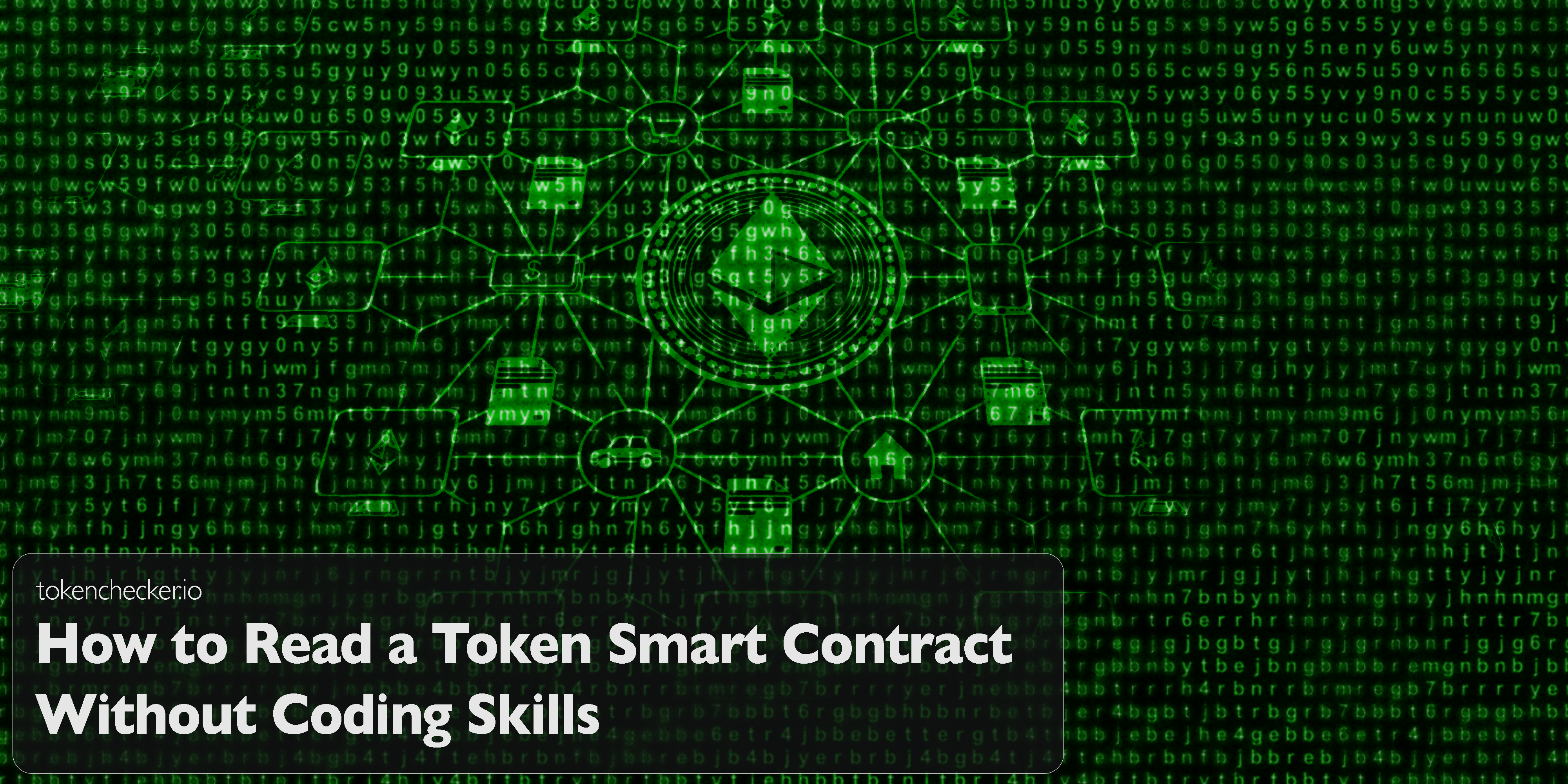
How to Read a Token Smart Contract Without Coding Skills
Introduction
Smart contracts might sound like something only developers can understand but that’s not true. You don’t need to know how to code to check whether a token is suspicious, verify the supply, or even read the contract functions. You just need the right tools and a basic understanding of what to look for.
In this guide, we’ll show you how to explore any token’s smart contract using blockchain explorers like Etherscan and BscScan. No technical background needed.
What Is a Token Smart Contract?
Think of it like the rulebook behind a token. Every crypto token is powered by a smart contract—a piece of code that defines how the token works. This includes how many tokens exist, who can send or receive them, whether new tokens can be minted, and whether any trading restrictions exist.
Most tokens follow common templates like ERC-20 (for fungible tokens) or ERC-721 (for NFTs). These standards help ensure that wallets and platforms can interact with the tokens consistently. But scammers often tweak these templates to insert backdoors or hidden functions. That’s why knowing how to read the contract matters.
What You Need: A Blockchain Explorer
A blockchain explorer is a website that lets you search and view on-chain data. The two most popular ones are:
- Etherscan (for Ethereum-based tokens)
- BscScan (for Binance Smart Chain tokens)
These sites let you:
- Look up token contracts
- Check balances
- Track transactions
- View smart contract code
Step-by-Step: How to Read a Contract Without Coding
Step 1: Find the Token Contract Address
This is like the URL of the token’s code. You can find it:
- From your wallet (e.g. MetaMask)
- On an exchange where the token is listed
- From a past transaction (via TXID)
- On the project’s official website (always verify this!)
Step 2: Paste It Into Etherscan or BscScan
Once on the token’s contract page, you’ll see tabs like:
- Overview: Basic info
- Transactions: Transfers in and out
- Contract: The actual code, plus two key tabs:
- Read Contract
- Write Contract
Step 3: Use the "Read Contract" Tab (Safe)
This tab lets you query data without connecting your wallet or spending gas. Here are key functions to look at:
- name() – Full name of the token
- symbol() – Short symbol (e.g. USDT)
- decimals() – Needed to interpret balances correctly
- totalSupply() – Total tokens in circulation
- balanceOf(address) – Lets you check any wallet’s balance
These functions help confirm that the contract matches what’s advertised. For example, if a token claims to have 1 million supply but shows 100 billion, that’s a red flag.
Step 4: Understand the Decimals
Most tokens use 18 decimals, which means a balance of "1000000000000000000" actually means 1 token. Always divide the raw number by 10^decimals to get the human-readable amount.
Step 5: Check If the Contract Is Verified
Look for a green "Verified" checkmark on the contract page. This means the source code has been published and matches the code running on-chain. Unverified contracts are harder to analyze and may be hiding something.
Step 6: Explore Wallets and Transactions
You can also:
- Paste any wallet address into the search bar
- View total holdings and token balances
- See all incoming/outgoing transactions
- Click TXIDs to see status, gas fees, and exact token amounts
Bonus: Use tokenchecker.io to Save Time
tokenchecker.io pulls all this data in one place—and shows you red flags automatically.
- Flags contracts with unverified code
- Detects honeypot behavior or blocked sells
- Shows if the contract can still mint tokens
- Checks for upgradeable proxies or hidden logic
- Reveals creator wallet behavior and holder distribution
Even if you don’t understand the code, you can understand the risk.
Final Thoughts
Reading a smart contract without coding is totally possible. Tools like Etherscan, BscScan, and tokenchecker.io make the process easier and safer for regular users.
Always:
- Verify the contract address
- Check decimals and supply
- Look for the verified badge
- Use "Read Contract" before ever using "Write Contract"
- Review the project’s audit status if available
Knowledge is your best protection in DeFi and with just a few clicks, you can spot major risks hiding in plain sight.